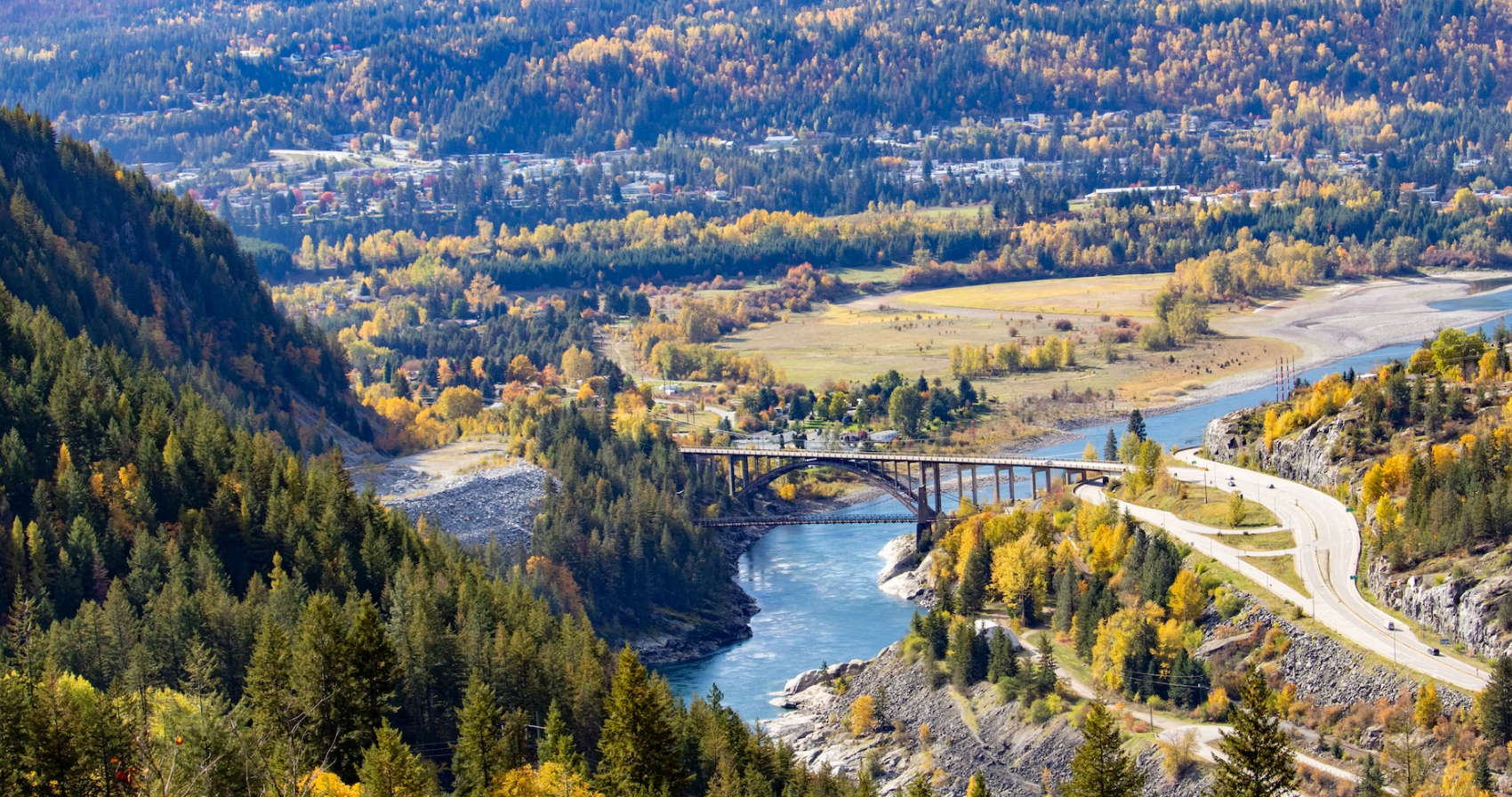Kootenay Real Estate: Where are we headed in the next 10 years?
The Kootenay region in British Columbia, Canada, known for its stunning natural landscapes, vibrant communities, and affordable living, has been attracting residents and investors alike. As we look ahead to the next decade, predicting the precise trajectory of the Kootenay real estate market is a complex task. It is influenced by a myriad of factors, including demographic shifts, economic developments, environmental considerations, and market dynamics. However, by examining current trends and potential drivers, we can offer some insights into what the Kootenay real estate market may experience in the next 10 years.
Population Growth and Demographics
One of the fundamental drivers of real estate markets is population growth and demographics. Over the past few years, the Kootenay region has witnessed an influx of newcomers, including retirees seeking a peaceful retirement and remote workers looking to escape the hustle and bustle of urban centers. This trend is expected to continue into the next decade. The allure of the Kootenays lies in its natural beauty, outdoor recreational opportunities, and strong sense of community. As the population grows, it brings with it a demand for housing. This demand may manifest in various ways, from increased interest in single-family homes in smaller communities to the development of housing complexes designed to accommodate retirees. Developers and real estate professionals will need to understand the demographics of incoming residents to cater to their specific needs and preferences.
Economic Development
Economic factors play a significant role in shaping real estate markets. The Kootenay region has witnessed diversification in its economy, with sectors such as technology, tourism, and outdoor recreation gaining prominence alongside traditional industries like forestry. This economic diversification has led to job growth and attracted new businesses to the area. In the coming years, continued economic development will likely stimulate further housing demand. As job opportunities expand, individuals and families will seek housing options in close proximity to economic hubs. Real estate developers may find opportunities in building affordable housing for the workforce, while also catering to remote workers who value the Kootenay lifestyle.
Remote Work Trends
The COVID-19 pandemic has accelerated the adoption of remote work across various industries. Many professionals have experienced the benefits of telecommuting, including a better work-life balance and the ability to choose where they live. For some, the Kootenay region has become an attractive destination, offering the serenity of small-town living without sacrificing career opportunities. If remote work remains a viable option for a significant portion of the workforce, we can anticipate increased interest in Kootenay communities. This trend may manifest in various ways, including higher demand for homes with dedicated home offices, the revitalization of smaller communities, and increased investment in digital infrastructure to support remote work.
Housing Affordability
Housing affordability has long been a key selling point for the Kootenay region. Compared to major urban centers in British Columbia, such as Vancouver and Kelowna, the Kootenays offer more affordable housing options. This affordability has attracted first-time homebuyers, retirees on fixed incomes, and families looking for a cost-effective yet high-quality lifestyle. However, as demand for Kootenay real estate continues to grow, there is potential for upward pressure on housing prices. While this may be welcome news for homeowners, it also presents challenges for those seeking to enter the market. Striking a balance between affordability and housing availability will be a critical consideration for policymakers and real estate professionals in the years ahead.
Infrastructure and Connectivity
Access to reliable infrastructure and high-speed internet is no longer a luxury but a necessity, especially for remote workers and businesses. The Kootenay region has made strides in improving its infrastructure, including transportation networks and digital connectivity. These investments are crucial for supporting economic growth and attracting residents. In the next decade, continued efforts to enhance infrastructure and connectivity will be paramount. This includes upgrading roads and bridges, expanding public transportation options, and ensuring that high-speed internet is accessible in both urban and rural areas. Infrastructure improvements will not only facilitate daily life but also bolster the region’s appeal to remote workers and digital entrepreneurs.
Sustainable Development
Sustainability is a growing concern for homebuyers and investors. People are increasingly conscious of their environmental impact and are seeking housing options that align with their values. The Kootenay region, known for its pristine natural beauty, has a unique opportunity to lead in sustainable development practices. Real estate developers may need to consider incorporating green building practices, energy-efficient designs, and renewable energy solutions into their projects. Buyers may prioritize properties with sustainable features, such as solar panels, rainwater harvesting systems, and energy-efficient appliances. Embracing sustainability can not only attract environmentally conscious buyers but also contribute to the region’s long-term ecological health.
Short-Term Rental Regulations
The rise of short-term rental platforms like Airbnb has been a global phenomenon, and the Kootenay region has not been immune to its effects. Short-term rentals can impact housing availability and affordability in popular tourist destinations. Over the next decade, we may see continued discussions and potential regulatory changes related to short-term rentals. Local governments may implement regulations to manage their impact, such as limiting the number of short-term rental properties in certain neighborhoods or requiring hosts to meet specific licensing requirements. Real estate investors should stay informed about local regulations and their potential impact on property investment strategies.
Climate Change Resilience
The Kootenay region, like many other parts of the world, is not immune to the effects of climate change. Flooding, wildfires, and other climate-related risks can impact property values and the desirability of certain areas. Buyers may prioritize properties that are resilient to climate-related risks.
Real estate developers and local governments should consider climate change adaptation measures when planning and zoning. This may involve building codes that require elevated foundations, fire-resistant construction materials, or flood-resistant landscaping. Preparing for climate-related challenges can help protect property values and the safety of residents.
Tourism and Recreation
The Kootenay region’s natural beauty and recreational opportunities have long been a draw for tourists. Communities like Nelson, Revelstoke, and Fernie have thrived as tourist destinations, offering year-round activities such as skiing, hiking, and mountain biking. Real estate markets in areas with a strong tourism sector may experience fluctuations based on seasonal demand. Property values in these regions may be influenced by factors such as the success of ski resorts, the availability of summer recreation options, and the marketing efforts of local tourism boards.
Market Adaptability
In an ever-changing world, real estate markets that can adapt to shifting trends and incorporate innovative housing solutions are likely to thrive. This adaptability may involve exploring new housing models, such as co-housing communities, eco-villages, or mixed-use developments that combine residential and commercial spaces. Additionally, market participants, including real estate professionals, developers, and policymakers, should remain open to embracing emerging technologies that can enhance the buying and selling experience. This includes virtual reality tours, blockchain-based property transactions, and data analytics to better understand market trends.
Local Government Policies
Government policies and zoning regulations can significantly impact real estate markets. Local governments have the power to shape housing development, affordability, and sustainability through their policies and decisions. Over the next decade, it will be crucial for local governments to strike a balance between promoting economic growth, preserving natural landscapes, and addressing housing affordability challenges. Engaging with community stakeholders and carefully considering the implications of policy changes will be essential for responsible and sustainable real estate development.
Pandemic Recovery
The recovery from the COVID-19 pandemic may influence market dynamics in the Kootenay region. Economic shifts, government policies, and changes in consumer behavior will play a role in the region’s recovery and real estate prospects. For example, as the economy rebounds, job opportunities may increase, leading to a greater demand for housing. Additionally, the pandemic has prompted many individuals and families to reassess their housing needs, potentially driving interest in larger homes, home offices, or properties with outdoor amenities.
While predicting precise real estate market outcomes over the next decade is challenging, it is clear that the Kootenay region offers unique opportunities and challenges for real estate professionals, investors, and residents. Monitoring market conditions, staying attuned to evolving demographics, economic opportunities, and environmental considerations, and engaging in thoughtful, sustainable development practices will be essential for navigating the Kootenay real estate landscape in the coming years. The region’s continued growth and prosperity will depend on its ability to balance economic development with environmental stewardship and the preservation of its cherished quality of life.



